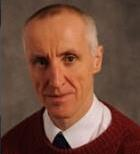
Dr. David Greenhalgh is a Reader in Mathematics and Statistics at the University of Strathclyde, Glasgow, United Kingdom.
He graduated from the University of Cambridge, UK, with a first class honours degree in Mathematics in 1980 and obtained a distinction in Part III Mathematics, also from the University of Cambridge in 1981. He obtained a Ph.D. in Operational Research in 1984 from Cambridge University Engineering Department. He moved to Imperial College as an MRC Training Fellow and then to University of Strathclyde as Lecturer, Senior Lecturer and Reader, his current position.
Dr. Greenhalgh specializes in mathematical and statistical models in biology and medicine and has published over eighty papers in international refereed journals and over seventy papers published from conferences.
He has supervised or co-supervised nineteen research students (seventeen at PhD level). He has been widely involved in the organization of over fifty international conferences and given over forty keynote, plenary and invited talks. He is or has been on the editorial board of seventeen international journals. He is currently the Executive Editor of Journal of Biological Systems and Deputy Director of the Centre for Mathematics Applied to the Life Sciences, University of Glasgow, Scotland. He is on the EPSRC (Engineering and Physical Sciences Research Council) Mathematics Peer Review College and has served on many MRC (Medical Research Council) Funding Panels. He has obtained funding from EPSRC, MRC, The Wellcome Trust, the Brazilian Government, the Technology Strategy Board, the Royal Society and the Royal Society of Edinburgh.
He has research interests in mathematics and statistics applied to medical and biological problems including theory of convergence of genetic algorithms, and signal and image processing methods involving multi-mask and multi-resolution filters. He has been involved in statistical work to develop automatic detection of outbreaks of infectious disease organisms, in collaboration with Health Protection Scotland (HPS). This laid the foundation of the current outbreak detection system used by HPS. He has also been involved in development of computer-based statistical methods to detect unrecognized replication in medical (HIV) datasets, in collaboration with the Public Health Laboratory Service, now Public Health England.















